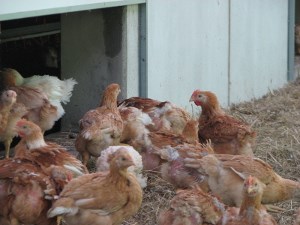Project responsible: Helena Wall, The Department of Animal Nutrition and Management (HUV), SLU.
Projectgroup: Emma Ivarsson (HUV), Kamyar Mogodiniyai Kasmaei (HUV) and Patrik Ellström, The Department of Medical Sciences, Uppsala University.
Previous studies have shown that lactic acid bacteria (LAB) have an inhibitory effect on the growth and survival of campylobacter. Organic broilers must have daily access to roughage, and silage is routinely provided to chickens at some organic farms. Silage has a high content of LAB as well as organic acids and is therefore a promising option that could serve to reduce the levels of campylobacter in the chick intestines.
The project begins with a fermentation study where different LAB inoculated in fresh forage prior to ensiling. When the fermentation is completed juice from the silages inoculated with different LAB are evaluated regarding their ability to inhibit Campylobacter. The LAB showing the greatest ability to combat campylobacter is then used when producing silage for an infectious trial where all chickens are deliberately infected with campylobacter.
In the infection experiment the candidate silage identified in the fermentation study will be given to half of the chickens while the others are given a roughage such as e.g. chopped alfalfa. The prevalence of campylobacter in chick droppings are regularly analyzed and chick intestinal microbial profile are evaluated.
Finally, the prevalence of campylobacter in chickens fed with silage compared with chickens given other roughage will be studied at organic broiler farms.
